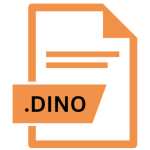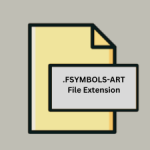.DT2 File Extension

Windows Live Messenger Emoticon Image File
| Developer | Microsoft |
| Popularity | |
| Category | Raster Image Files |
| Format | .DT2 |
| Cross Platform | Update Soon |
What is an DT2 file?
The .DT2 file extension is not commonly associated with a specific file type or format. It may be a proprietary format used by a specific software or a less common file type.
More Information.
Without specific historical data, the original purpose of .DT2 files remains unclear. Understanding their initial purpose would require knowledge of the software or system that created them.
Origin Of This File.
The origin and specific purpose of .DT2 files can vary greatly depending on the software or system they are associated with. Without context, it’s challenging to pinpoint their exact origin.
File Structure Technical Specification.
The technical details of .DT2 files can vary significantly. They might include binary data, text, or a combination, depending on their intended use and the software that utilizes them.
How to Convert the File?
Windows:
- Identify Software: Determine the software that created the .DT2 files (if known).
- Use Native Software: Open the software and check if it has options to export or save files in different formats.
- Third-Party Converters: Look for third-party file converters that claim support for converting unknown or proprietary file formats.
Linux:
- Identify Software: Similarly, identify the software used to create .DT2 files.
- Native Tools: Use native tools or software in Linux that might be compatible with the format.
- Third-Party Converters: Explore third-party converters available for Linux that support converting unknown file formats.
macOS (Mac):
- Identify Software: Know the software that generated the .DT2 files, if possible.
- Mac Applications: Use the relevant Mac application to open and potentially export or convert the files.
- Third-Party Solutions: Check for third-party software on macOS that can handle unknown or proprietary file formats.
Android:
- App Compatibility: Find apps on the Google Play Store that claim to open or convert .DT2 files.
- Third-Party Converters: Use file conversion apps that support various file formats to attempt converting .DT2 files.
iOS (iPhone/iPad):
- App Store Apps: Look for apps on the App Store that support opening or converting .DT2 files.
- Use Specific Apps: Utilize apps designed for file conversion or file management on iOS devices.
Other Platforms:
- Research Compatibility: For other platforms or devices, research specific software or apps that might support .DT2 files.
- Cross-Platform Solutions: Use cross-platform file converters that claim to support a wide range of file formats.
Advantages And Disadvantages.
Advantages and disadvantages would depend heavily on the software and context in which .DT2 files are used. Typically, advantages might include efficient storage or processing, while disadvantages could include compatibility issues or proprietary constraints.
How to Open DT2?
Open In Windows
To open .DT2 files in Windows, you would typically need the software that created them or a compatible viewer or converter. Without knowing the originating software, opening them directly in Windows might not be possible.
Open In Linux
Similar to Windows, opening .DT2 files in Linux would require understanding the software that generated them or using a compatible tool or emulator if it’s a proprietary format.
Open In MAC
Mac users would follow a similar approach to Windows and Linux users. They would need either the software that created the .DT2 files or a compatible viewer/converter.
Open In Android
Opening .DT2 files on Android would typically involve using apps that can handle the file format, assuming such apps are available on the platform.
Open In IOS
On iOS devices, opening .DT2 files would also rely on having access to compatible apps or software that supports the format.
Open in Others
Opening .DT2 files on other platforms would follow the same principles: either using the software that created them or finding compatible tools or converters.













